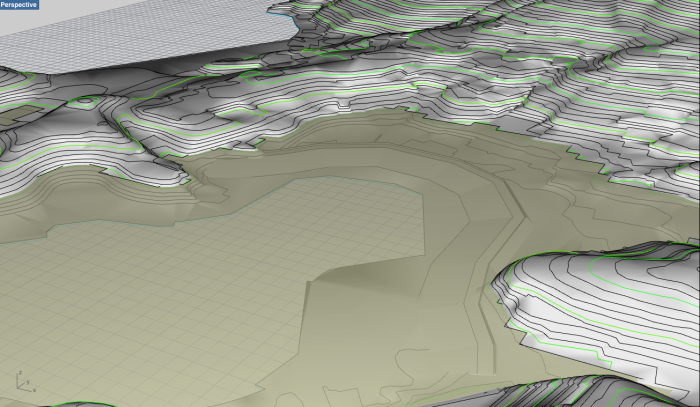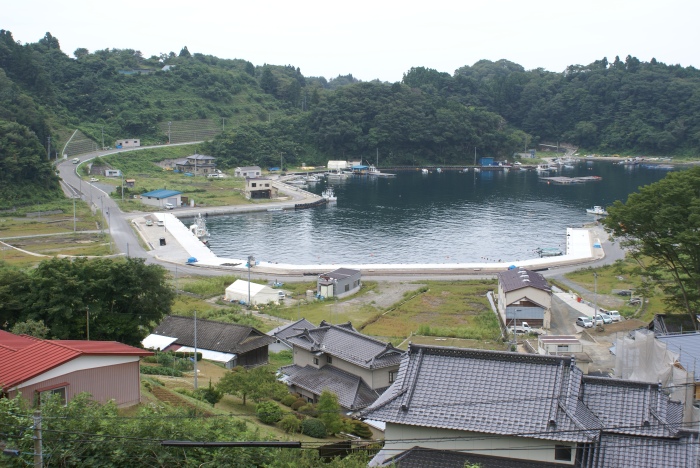In September 2014, I was happy to see Shibitachi still without a seawall. However, it could become a reality soon. The process is not very clear for an otsider, but from what is documented here: http://imakawa.net/archive/510.html
I can gather that a 8.1m tall wall is still planned for Shibitachi.
I did some models to see if: 1 the wall would actually protect anything and 2 what impact it would have in a lower height.

This is the model of a 8.1m high seawall based on the drawings and topographic information available here: http://imakawa.net/wp/wp-content/uploads/EPSON007.jpg
In the drawing it seems like that one or two buildings would be ‘protected’ by the new infrastructure. All other buildings are either destroyed or located on higher ground.

The first model of inundation is illustrating that if a major Tsunami hits, the wall will be submerged. The wall is designed for smaller, more frequent Tsunamis.
Even if a smaller wave is generated, it is likely that the area behind the wall will be inundated as shown in this model. http://imakawa.net/wp/wp-content/uploads/EPSON008.jpg
Finally noting, that no buildings would be protected as there are none to begin with. Further, the wall has a very wide base of up to 30m, meaning it would actually cover all area for buildings.
Note: the inundation models were created based on information accessed here: http://imakawa.net/archive/510.html


